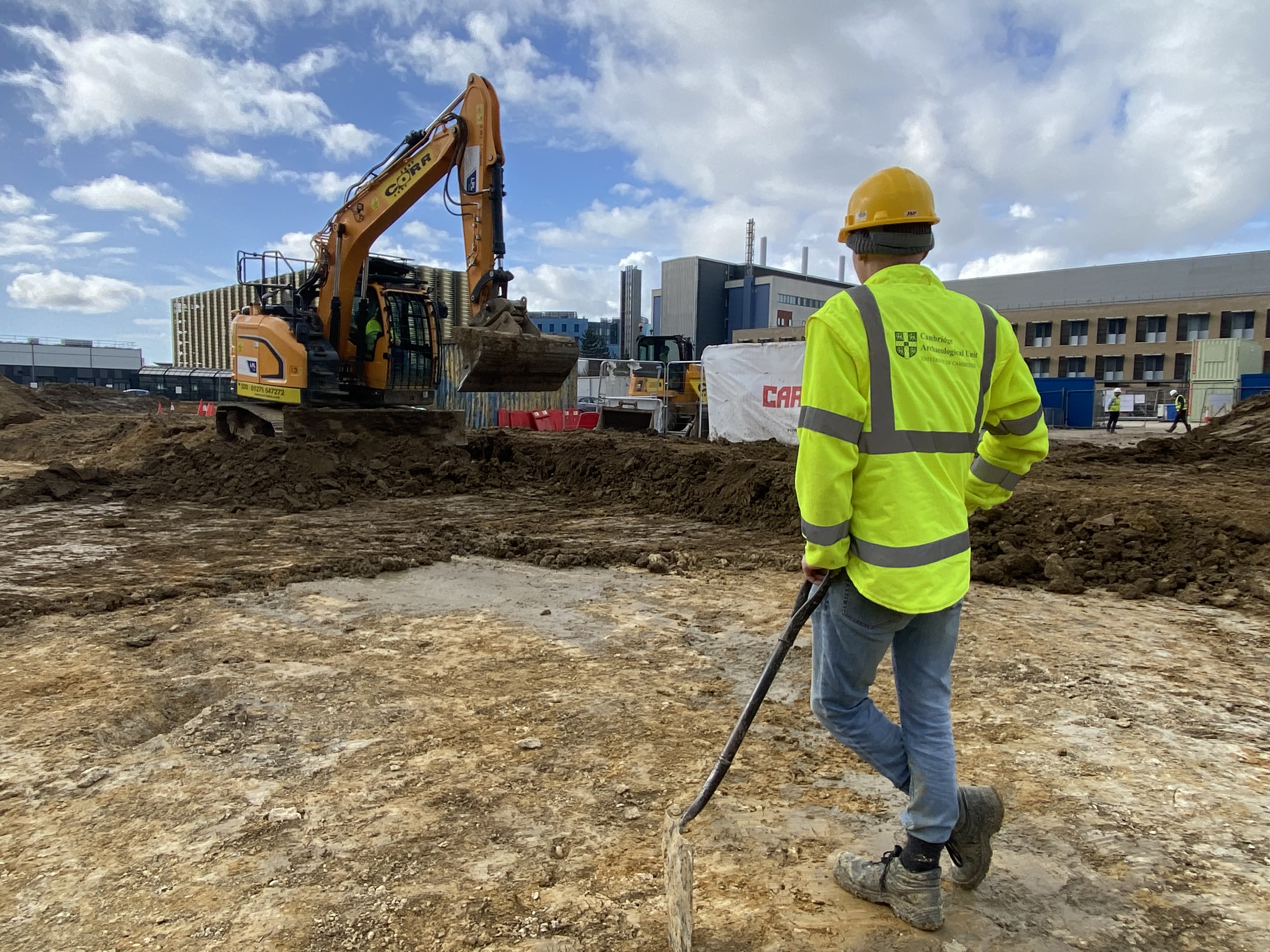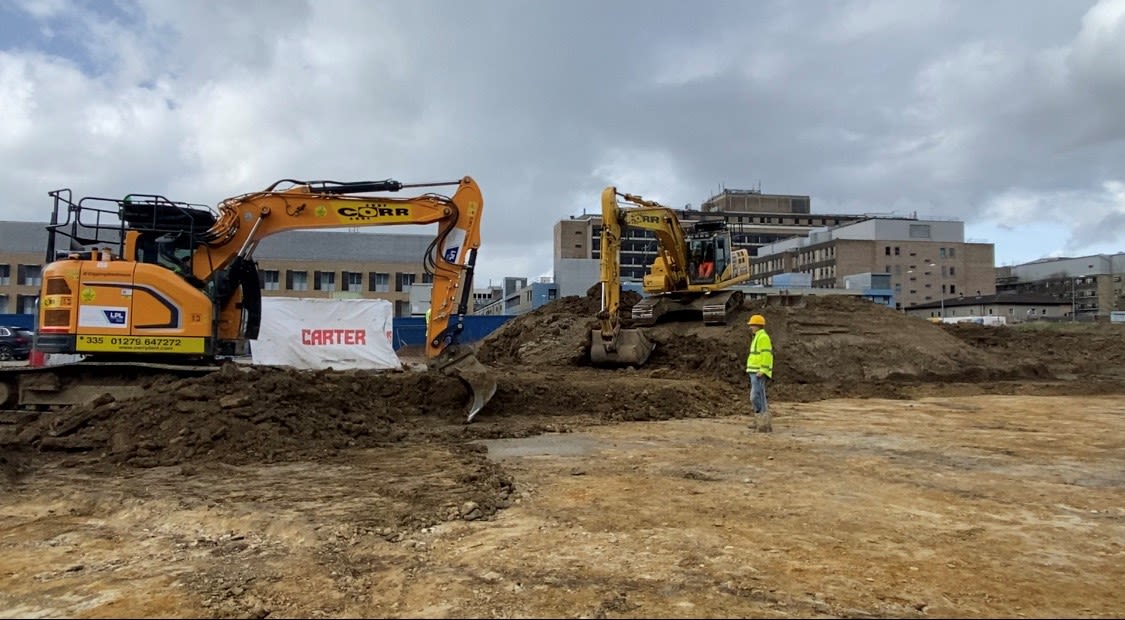Digging down
Preparing the site for Cambridge Children's Hospital

Building a future children's hospital also involves looking back in time. With pre-construction works now underway, an archaeological team from the University of Cambridge is playing their part in getting the site ready for the next stage.
Archaeology is an important part of the early works for any development site, often uncovering a wealth of information about local and national history.
While RG Carter are delivering the pre-construction works, including access points and connecting services, they are also excavating the land ready for the Cambridge Archaeological Unit (CAU) team to step in.
The Cambridge Children's Hospital future site is the vast expanse of mud opposite the Rosie Maternity Hospital. Right now, it holds clues about how the landscape was used and how it changed throughout history. Anything of archaeological interest will be carefully recorded and add to the wealth of archaeology and information already uncovered in the earthy underbelly of the Cambridge Biomedical Campus.
"It's really exciting to be able to contribute to the end goal of the Cambridge Children's Hospital."

Alasdair Wright from Cambridge Archaeological Unit, which is part of the Department of Archaeology at the University of Cambridge
Alasdair Wright from Cambridge Archaeological Unit, which is part of the Department of Archaeology at the University of Cambridge
Alasdair Wright is one of the CAU project officers and describes this as a well understood landscape, archaeologically. "The Cambridge Children's Hospital dig is about filling in some blanks. This area would probably have been a mosaic of trackways and pieces of pasture and cultivation. There would have been people herding animals and tilling the land. Very much agricultural communities."




The Cambridge Children's Hospital site is part of a wider historical landscape around Addenbrooke's Hospital that archaeologists have been exploring over recent years.
Digs have taken place prior to construction of the new developments on the Cambridge Biomedical Campus, including Papworth Hospital and the massive AstraZeneca building.
Archaeologists never know what they might find underneath the ground until they start digging, although they do have a significant understanding of this area.
The team have already uncovered Bronze age field systems overlaid with Roman field systems, which shows how land was used in the local area.
The process
The team focuses on one small area at a time, excavating and recording the archaeology within. That is then signed off by the local authority's planning archaeologists before the land is handed back to the construction team.

Alasdair carefully monitors the levels of soil being excavated
Alasdair carefully monitors the levels of soil being excavated
An excavator carefully removes the soil ready for the dig. Archaeological features, such as pits, ditches, and postholes, are often subtly different from the natural geology of an area.
"A trained eye can pick out the differences in colour, types of soil and even their compaction, which allows the team to work out where to dig and where the archaeology can be found."

The field team focuses on one small area at a time
The field team focuses on one small area at a time
Before the dig starts, the site team creates a plan which acts as a birds-eye view of the different archaeological features that have been uncovered during excavation. This helps them tackle each area of the site, working out its history, what happened and when.
The detail
The field team usually targets specific areas of the archaeology and uses them to work out important information that helps our interpretation of what we find. For example, if they find a circular pit they will initially dig half of it, leaving the other half in the ground. This allows them to look at the 'section', to see if they can identify different layers - different stories - in the life of that individual feature.
Another technique is looking for a point that two straight ditches cross one another. By digging a straight line through the meeting point they can look at how the two interact, working out which came first, and which was later dug through it. This understanding of how the archaeology interacts is called stratigraphy and helps them build up a picture of all the different features they find.

The team are building up a picture of the site by looking at the muddy layers for context
The team are building up a picture of the site by looking at the muddy layers for context
The finds
Once artefacts are discovered they are very carefully numbered and bagged, providing a record of exactly where they came from and their context. Artefacts will be examined by experienced, specialist archaeologists who write reports which provide extra insight and detail, all helping with the interpretation of the site.
"For me it's not about individual finds, it's about cumulatively building up a complex understanding of how people lived in these areas."

